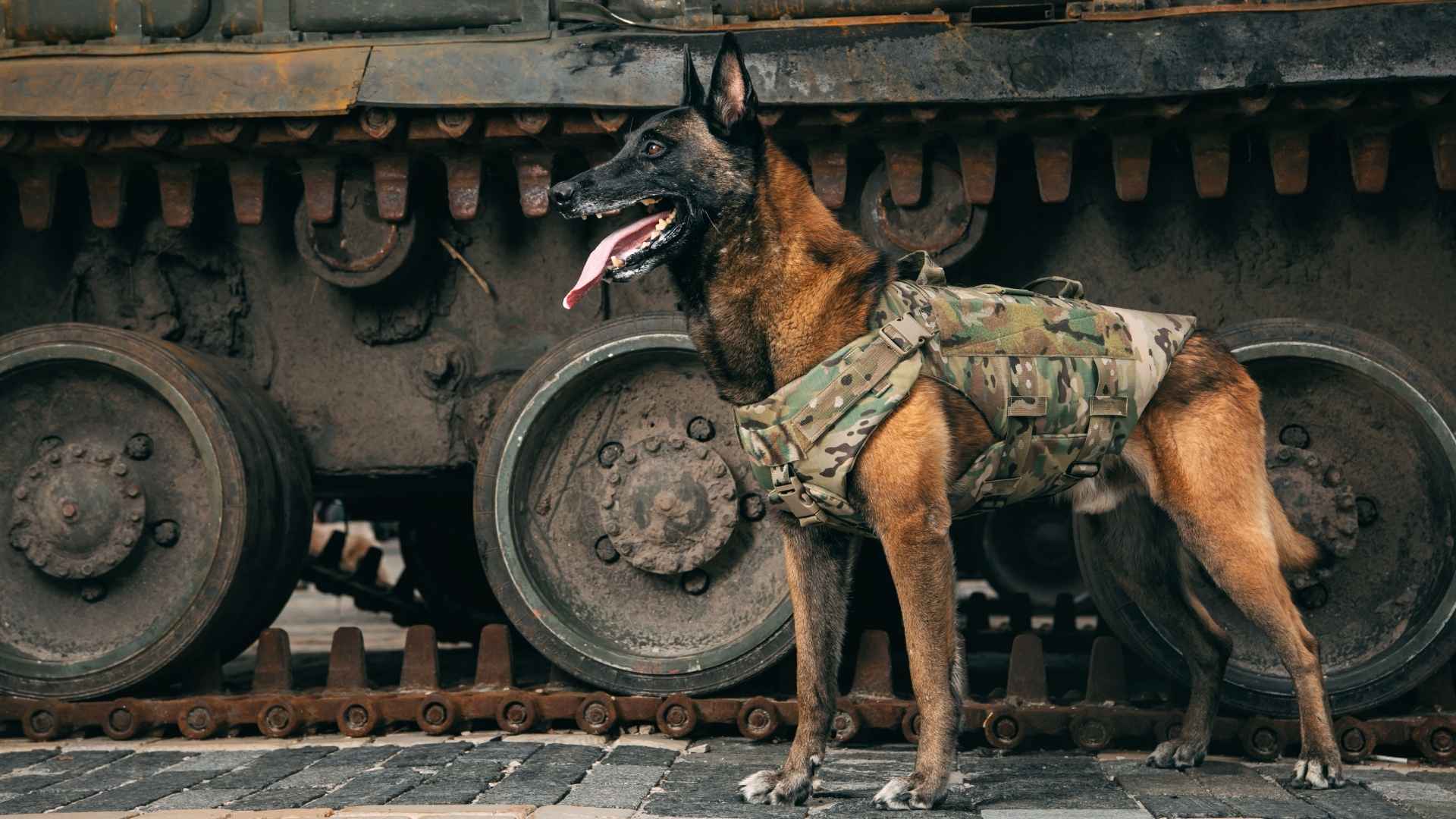For centuries, dogs have stood by humans in some of the harshest and most dangerous conditions on earth—including war zones. Their loyalty, courage, and adaptability have made them indispensable partners to soldiers, aid workers, and security forces operating in unpredictable environments.
In these extreme situations, a dog’s role can range from guarding perimeters to detecting threats and even providing emotional comfort to those under constant stress.
The breeds that excel in such conditions possess more than just physical strength—they have natural guarding instincts, unshakable confidence, and an innate drive to protect. Some are known for their ability to remain calm under heavy fire, while others use their remarkable senses to detect hidden dangers before they become deadly. These qualities, honed over centuries of selective breeding, make them exceptional assets in the field.
In this article, we’ll spotlight the breeds renowned for their bravery in hostile terrains, examining the unique traits that allow them to thrive in intense, high-pressure environments where only the toughest—and most loyal—dogs succeed.
Dog Breeds That Stay Brave In Harsh War Zones
1. Rottweiler

Descended from the mastiffs of Roman legions, the Rottweiler—also called the Rottie—is a formidable working breed with deep roots in guarding and herding. AKC says the Rottweiler is a loyal and loving dog breed.
Males stand 24–27 inches at the shoulder, while females are slightly smaller, both carrying a muscular frame that can weigh from 80 to over 100 pounds. Their sleek black coats with rust markings emphasize their powerful build and confident posture.
Historically used to drive cattle and protect property, today’s Rottweiler retains its natural instinct to defend and serve, making it a capable companion in military or high-risk environments. With proper guidance, their courage and steadiness emerge as key assets in challenging situations.
Unique Traits
Rottweilers combine physical power with a high level of trainability, excelling in obedience, tracking, and protection work. They possess an innate territorial instinct, which, when channeled through early training and socialization, produces a calm yet vigilant guardian.
Their balanced blend of prey drive and defensive capability allows them to respond decisively under pressure, while their loyalty to their handler fosters strong operational partnerships.
Fact: Despite their imposing size, many Rottweilers are unaware they’re not lap dogs and will happily climb onto their owner’s lap for a cuddle.
2. Giant Schnauzer
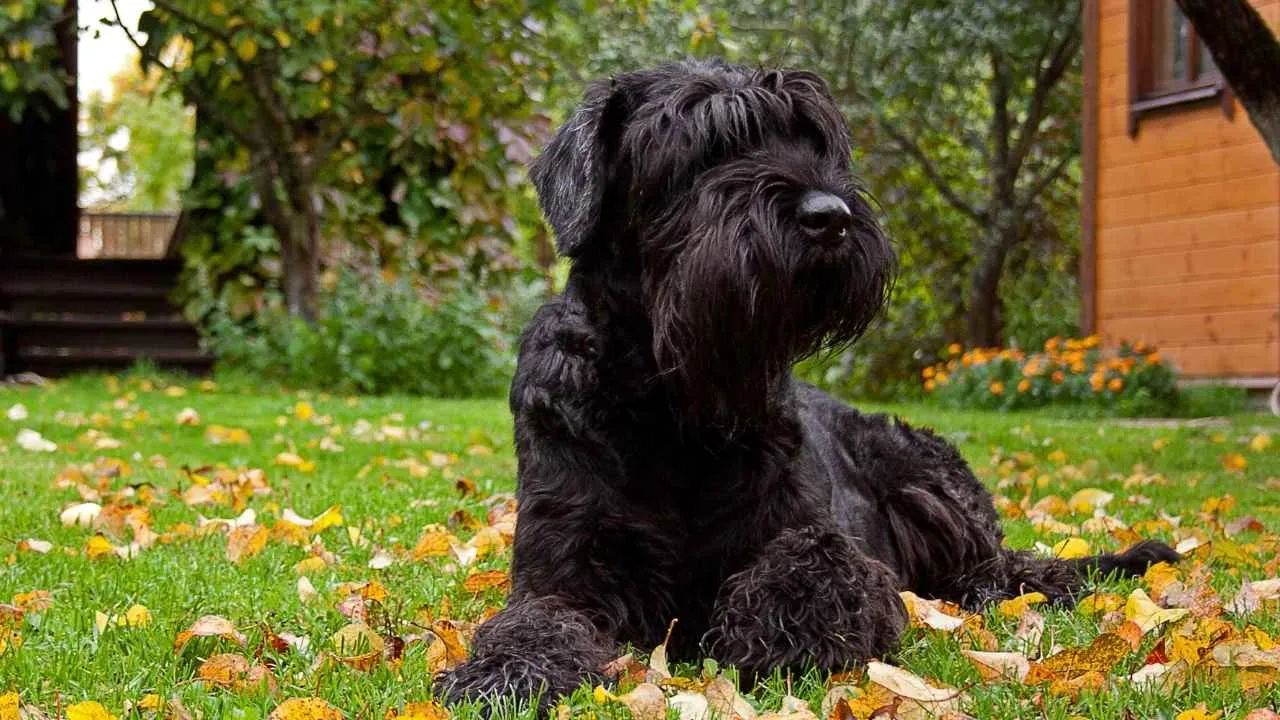
Also called the Riesenschnauzer, this imposing breed originated in Germany as a versatile farmhand—herding cattle, guarding property, and later serving in police and military roles. Males can stand up to 27.5 inches tall and weigh around 95 pounds, with a dense, weather-resistant double coat in solid black or pepper-and-salt.
The hallmark beard and eyebrows frame an intelligent, penetrating gaze. A well-bred Giant Schnauzer combines muscle, agility, and endurance, making it a formidable figure both in the field and on patrol. Its working-dog background and history with the U.S. Air Force and Secret Service underscore its value in high-pressure environments.
Unique Traits
Renowned for their composure, watchfulness, and unwavering loyalty. PetMD says Giant Schnauzers are intelligent, eager to please, and easy to train. Their commanding presence can shift from amiable at rest to highly assertive when duty calls.
Bred for endurance, they thrive on regular physical and mental challenges, excelling in detection work thanks to a sharp nose and strong prey drive. This blend of rugged build, protective instinct, and high trainability makes them dependable in harsh war zones.
Fact: Giant Schnauzers once worked alongside the Secret Service, including during the tenure of former President Trump.
3. Bloodhound
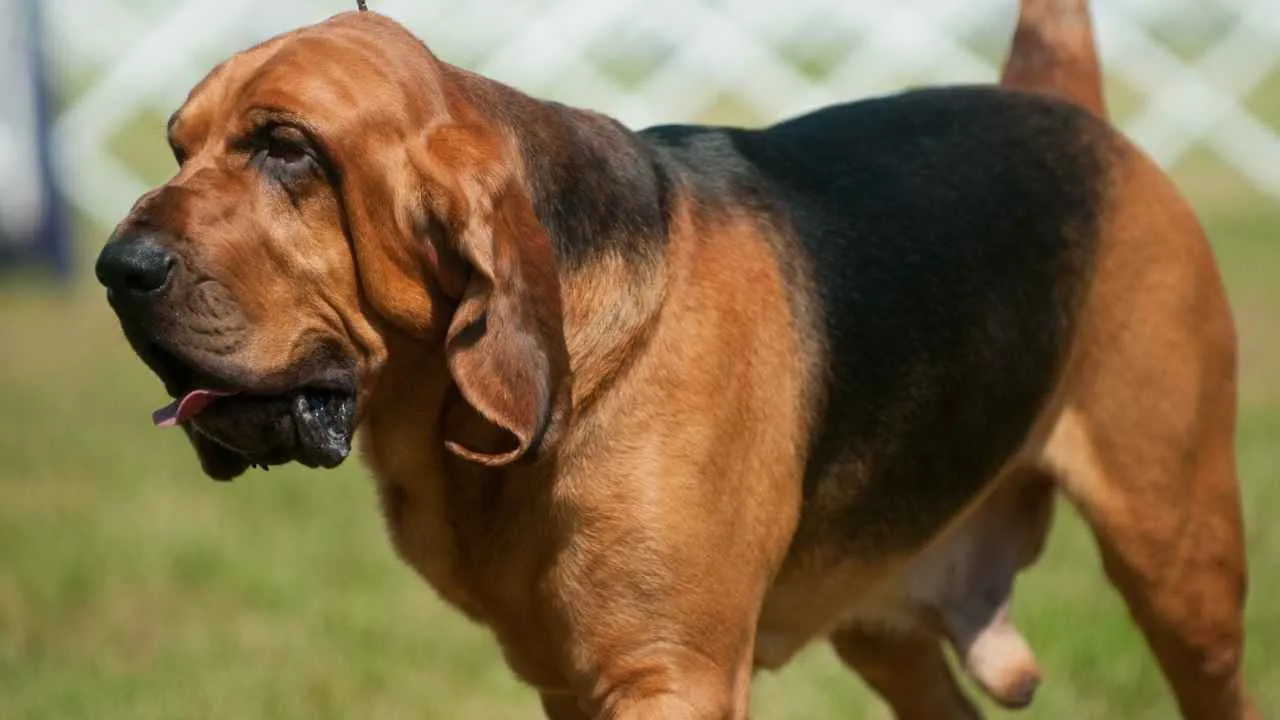
Standing 23 to 27 inches tall and weighing up to 110 pounds, the Bloodhound—also known as the “Sleuth Hound”—is a large, dignified scent hound famed for unmatched olfactory power.
Originating from medieval Europe, it has long been valued in search, rescue, and law enforcement, and that same skill proves invaluable in war zones for detecting explosives and tracking missing persons.
Its distinctive appearance includes a long, wrinkled face, loose skin, pendulous ears, and soulful, deep-set eyes.
Coat colors typically include black and tan, liver and tan, or red, with muscular legs built for endurance over rugged terrain. Britannica says that although the dog’s coat only needs occasional brushing and bathing, the chest and face area may require more frequent cleaning.
Unique Traits
The Bloodhound possesses roughly 300 million scent receptors—nearly 40 times more than humans—enabling it to follow even days-old trails through dense brush or debris. This powerful nose, combined with a relentless work ethic and an innate ability to stay focused under stress, makes it a reliable ally in chaotic environments.
Despite their tracking intensity, Bloodhounds are generally gentle, sociable pack dogs that get along with people and other animals, maintaining composure even in tense situations.
Fact: Their scent evidence is so accurate that it has been deemed admissible in court for criminal investigations.
4. Doberman Pinscher
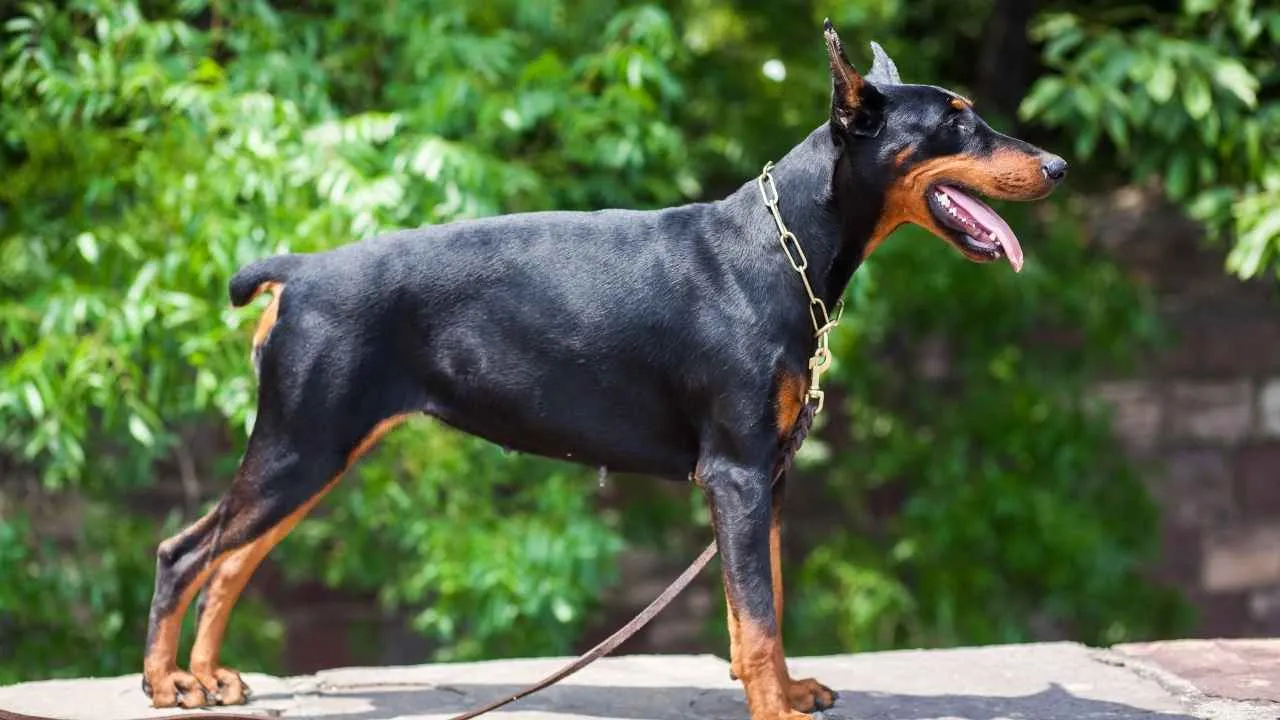
Also called “Dobes” or “Dobies,” the Doberman Pinscher is a sleek, muscular working dog originally bred in Germany for guarding duties. Standing between 24–28 inches at the shoulder and weighing 60–100 pounds, they boast a streamlined yet powerful frame, marked by a short coat in black, blue, red, or fawn with rust accents.
Their wedge-shaped head, athletic gait, and alert stance contribute to their imposing presence. Known for exceptional trainability, they quickly gained prominence in both World Wars as messengers and scouts, valued for their quick reactions and unwavering loyalty.
In modern times, they remain a respected choice for police, military, and personal protection work. Life expectancy averages 10–12 years.
Unique Traits
Dobermans excel under pressure, combining keen intelligence with an instinctive protective nature. They possess strong prey and defense drives, enabling them to assess threats calmly yet respond decisively when necessary.
Their loyalty to their handlers fosters a willingness to guard fearlessly, while their sensitivity to training makes them adaptable in high-stakes environments. This blend of mental acuity, athleticism, and courage ensures they can switch from affectionate companions to formidable protectors in moments.
Fact: During World War II, the U.S. Marine Corps adopted the Doberman as its official war dog, using them extensively in the Pacific theater.
5. Alaskan Malamute
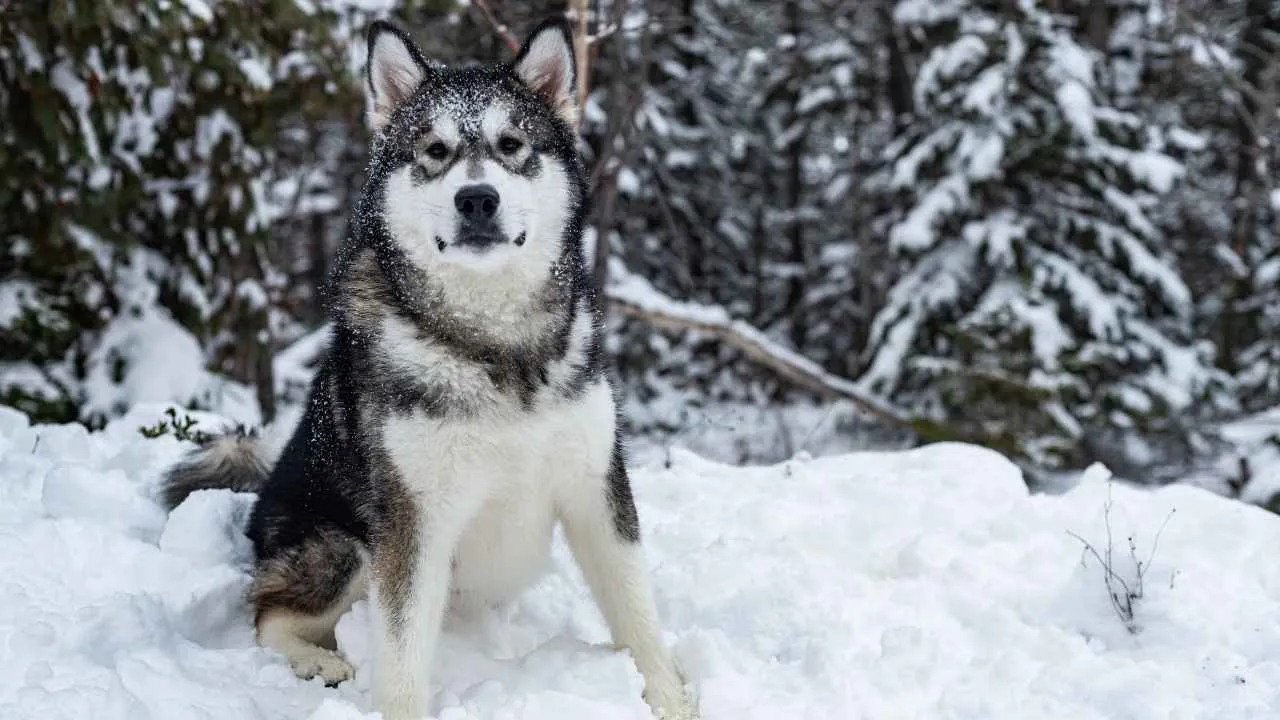
Originating from the Arctic and developed by the Malemiut people of Alaska, the Alaskan Malamute—also called the “Mal”—is one of the oldest sled dog breeds. Standing 23–25 inches tall and weighing 75–85 pounds, these powerfully built dogs feature broad heads, erect ears, and a distinctive plumed tail carried over the back.
Their dense double coat, often in gray-and-white or black-and-white patterns, offers vital protection in freezing climates. Historically, they hauled heavy loads across snow and ice, hunted seals, and guarded against predators.
With a life expectancy of 10–14 years, they belong to the Working group and have served in expeditions, polar exploration, and even World War II search-and-rescue missions.
Unique Traits
Malamutes are pack-oriented, loyal, and affectionate, yet retain a dignified independence. They possess immense strength, deep chests, and weatherproof coats built for endurance rather than speed. Highly social, they bond strongly with their human “pack” and require a confident leader to thrive.
Their almond-shaped brown eyes convey both intelligence and warmth, while their steady temperament and physical resilience make them reliable in extreme, high-pressure situations.
Did you know? Filmmaker George Lucas based the Star Wars character Chewbacca on his own Alaskan Malamute, “Indiana,” who also inspired the name of Indiana Jones.
6. German Shepherd
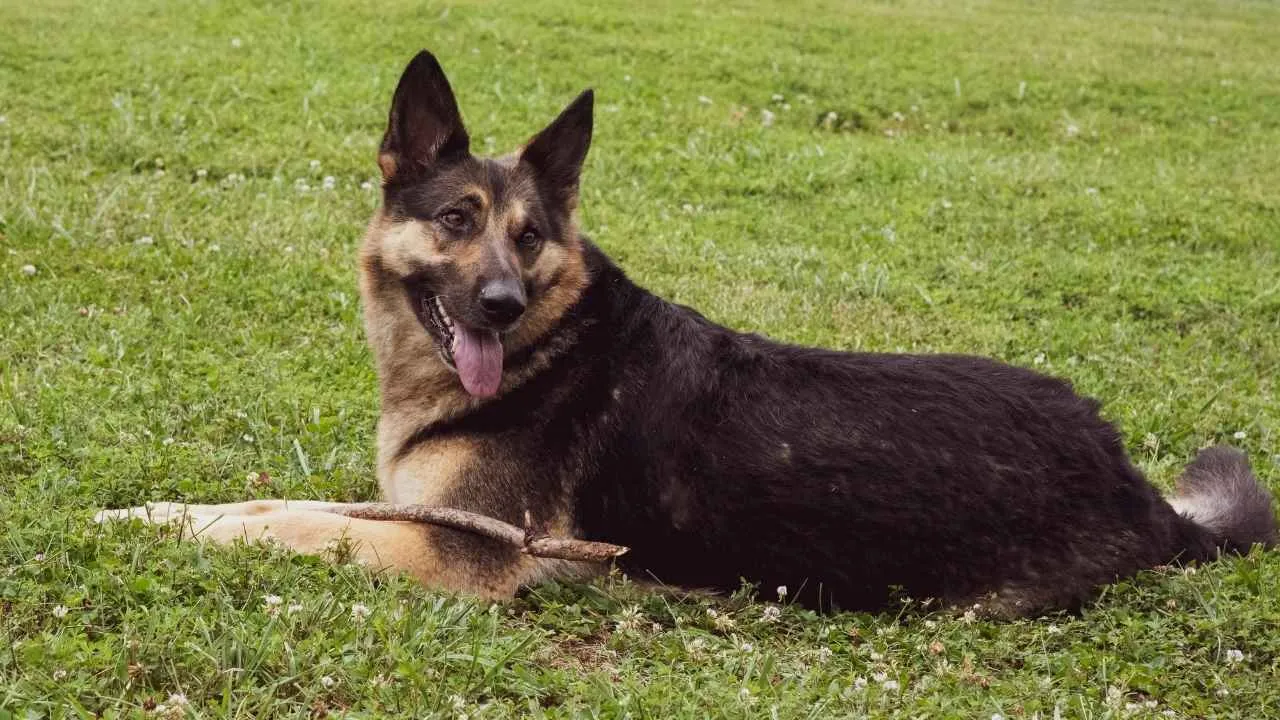
Also called the Alsatian in some regions, the German Shepherd originated in late 19th-century Germany as a herding and guard dog.
This large, agile, and muscular breed typically stands up to 26 inches tall and weighs between 50–90 pounds. With a lifespan of around 7–10 years, they belong to the herding group but have earned a legendary place in military and police service.
Their rise to global fame began during World Wars I and II, when they served as messengers, sentries, ammunition carriers, and Red Cross rescue dogs. Their noble bearing, keen intelligence, and unmatched trainability made them indispensable in harsh combat zones.
Unique Traits
These military dog breeds combine high intelligence with exceptional courage and loyalty, allowing them to master complex commands and face danger without hesitation.
They possess a balanced blend of prey, defense, and fight drives, enabling them to remain composed under stress and to protect their handlers with unwavering resolve.
Despite their imposing presence, they are known for their gentleness with family, playful energy, and ability to adapt to both protective duties and affectionate companionship.
Fact: In both World Wars, German Shepherds were trained to locate wounded soldiers, carrying medical supplies to the front lines under heavy fire.
7. Belgian Malinois
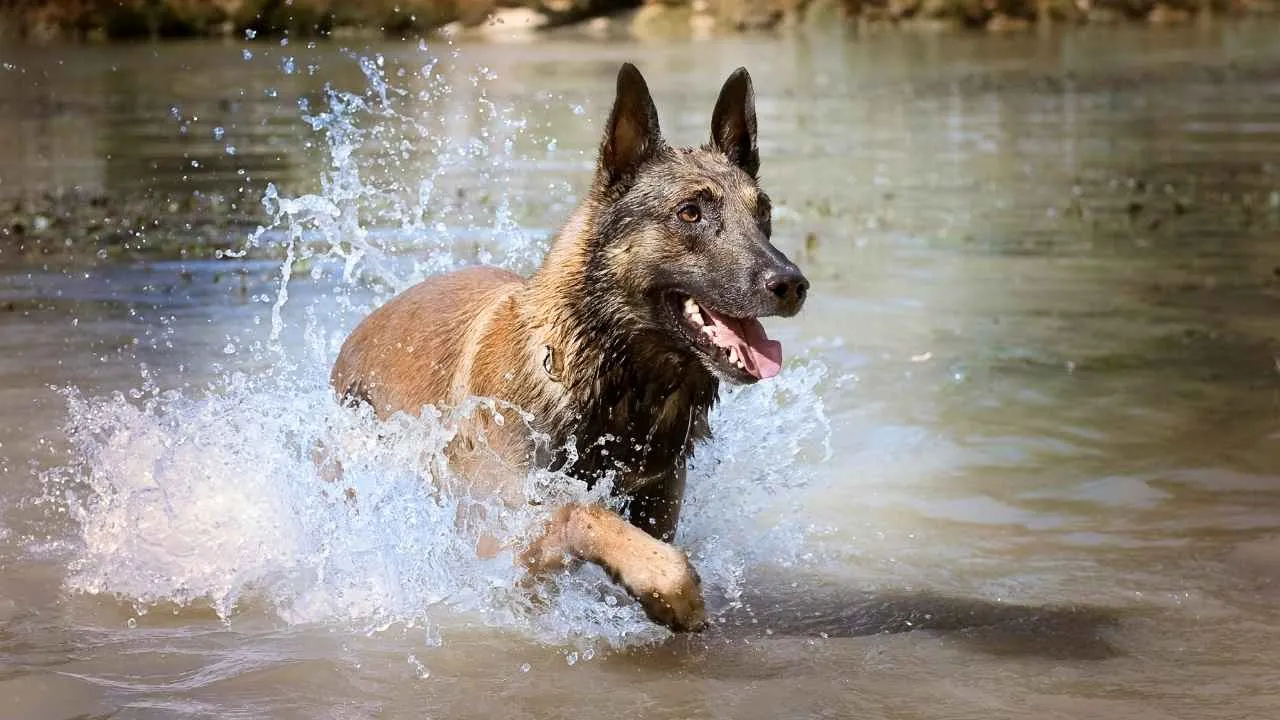
The Belgian Malinois—also called the Malinois or “MAL-in-wah”—is a sleek, squarely built herding breed originating from Belgium. Standing 22–26 inches tall and weighing 40–80 pounds, this agile working dog is prized for its elegant strength and no-nonsense appearance.
Its short coat ranges from rich fawn to deep mahogany, accented by a black mask and ears that frame dark, intelligent eyes. Developed as a herder, the breed now excels in police, military, and protection roles, where its quickness and precision shine.
With a life expectancy of 14–16 years, the Malinois is known for forging an intense bond with its handler and thriving when given meaningful work.
Unique Traits
The Belgian Malinois combines high intelligence with unyielding energy, enabling it to adapt to extreme and unpredictable conditions. Its lighter frame compared to German Shepherds makes it faster and more maneuverable, ideal for confined or rapidly changing environments.
Exceptional trainability allows it to master complex tasks under pressure, while its unwavering focus keeps it effective amid chaos. This breed’s genetic drive for protection, alertness, and endurance has made it a favored choice for elite units worldwide.
Fact: A Belgian Malinois named “Cairo” took part in the Navy SEAL raid on Osama bin Laden’s compound, demonstrating the breed’s remarkable courage and discipline in one of the most high-risk missions in modern history.
8. Boxer
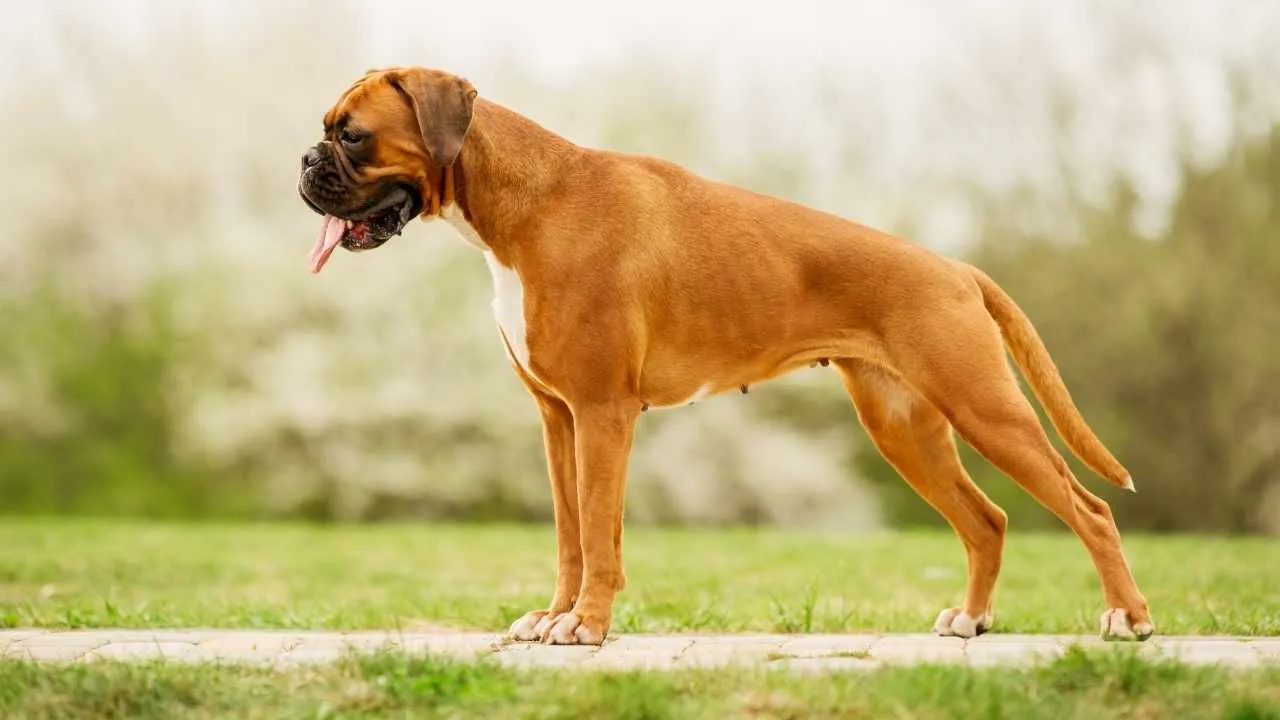
Also called the German Boxer, this breed emerged in late 19th-century Germany from crosses between the Bullenbeisser and English Bulldog. Males can stand up to 25 inches tall, with females slightly smaller; weight typically ranges from 50–80 pounds.
These military working dogs tight, short coat—usually fawn or brindle with white accents—that covers a lean but muscular frame, complemented by an alert expression from dark brown eyes and a wrinkled forehead.
Belonging to the Working Group, Boxers generally live 10–12 years. Bred for hunting and guarding, they blend agility with strength, making them well-suited for demanding environments, including military service.
Unique Traits
These guard dogs are energetic, intelligent, and exceptionally loyal. Their blend of protective instincts and patience makes them trustworthy around children while also dependable in dangerous settings. Highly trainable and eager to please, they respond well to early socialization.
Athleticism and endurance allow them to perform a range of tasks, from guarding to search work, without losing focus. Their bravery is matched by an affectionate temperament, ensuring they defend not from aggression, but from deep devotion to their human companions.
Fact: A famed Boxer named Vittles served with Allied forces in WWII, completing 131 missions and logging over 2,000 flight hours—equipped with a custom parachute for airborne operations.
9. Labrador Retriever
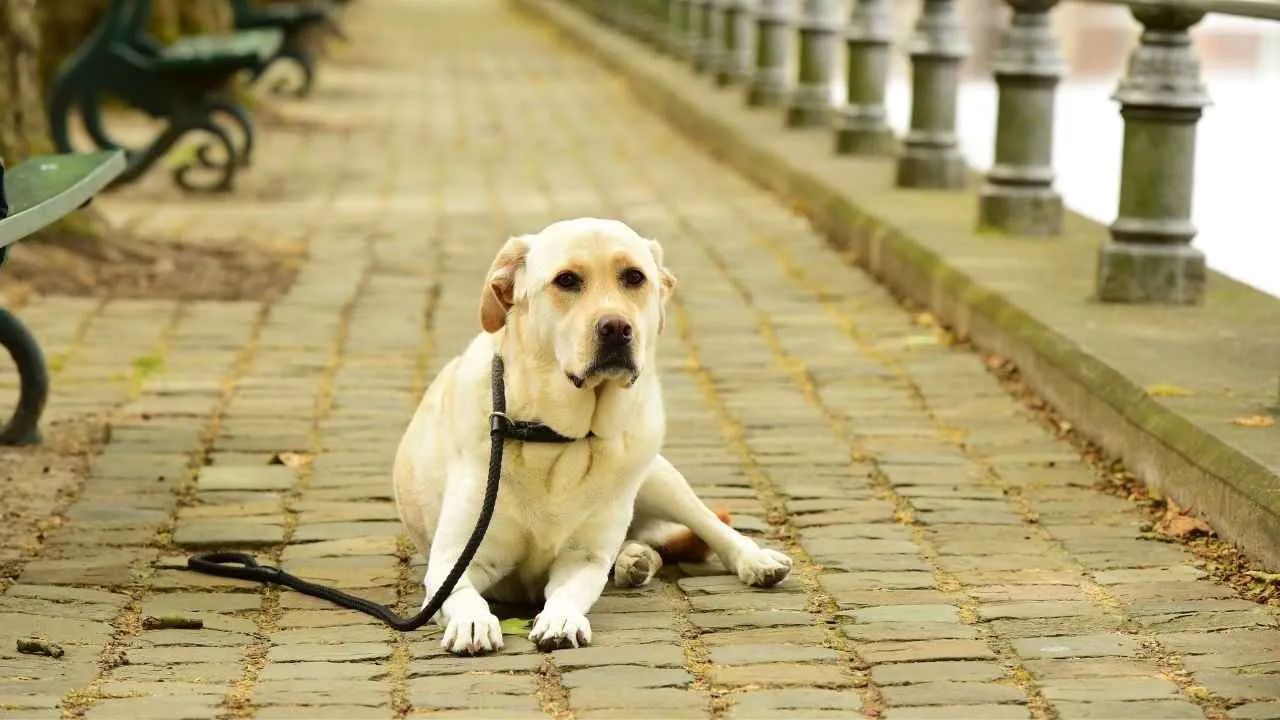
Also known simply as the Lab, the Labrador Retriever originated in Newfoundland and was refined in Britain for hunting and retrieving game. Males typically stand 22.5–24.5 inches tall, while females reach 21.5–23.5 inches. Weight ranges from 55 to 80 pounds, depending on sex.
Belonging to the sporting group, Labs have a dense, weather-resistant coat in yellow, black, or chocolate, with a broad head, expressive eyes, and a distinctive “otter tail.”
Their average lifespan is 10–12 years. Known for stamina, intelligence, and high trainability, they have a long history in roles requiring bravery and skill, making them reliable even in demanding environments such as war zones.
Unique Traits
Labradors are natural scent hounds, giving them exceptional tracking and detection abilities — a trait that has saved lives in combat. Their calm under pressure, eagerness to work, and strong swimming ability make them versatile in challenging terrains. Highly adaptable, they excel in teamwork and maintain composure despite loud noises or chaotic surroundings.
Fact: A heroic Lab named Gabe served in Iraq, detecting explosives on the riverbank — one of 26 finds during 210 combat missions, directly saving soldiers’ lives.
Conclusion
In the demanding world of military operations, only a select few breeds possess the courage, intelligence, and resilience to thrive under extreme pressure. These war dogs stand alongside military personnel and armed forces, navigating hostile terrains, enduring long missions, and carrying out tasks that can save countless lives. From detecting threats to guarding perimeters, their loyalty and unwavering focus are unmatched in both historic and modern military operations.
Beyond the battlefield, many of these courageous canines transition into roles as messenger dogs, service companions, or cherished retired military dogs, continuing to enrich lives long after their service ends. They remain a testament to the deep bond between humans and dogs—a partnership built on trust, bravery, and mutual respect. In honoring these remarkable animals, we also recognize the essential role they play in the safety and success of those who serve.


